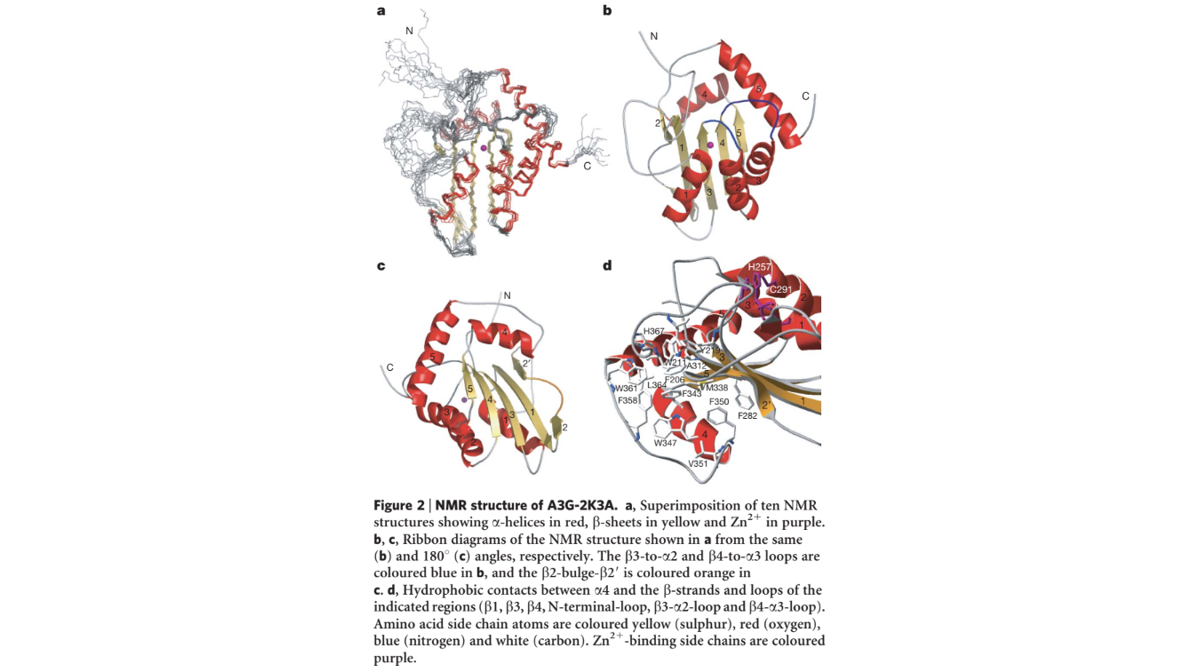Soluble, active DNA cytosine deaminase for use as a research tool
A method to produce soluble DNA cytosine deaminase for assays of potential inhibitors of HIV-1 and as a tool for biotech applications

Applications
- Screening for new HIV drugs
- Cytosine-specific single strand DNA mutagenesis
- dC-to-dU conversion as a biomarker
- Approach for making other DNA deaminase family members soluble
- Replacing bisulfite sequencing
- Semi-random mutagenesis
- Map DNA in-vivo
Key Benefits & Differentiators
- Functional: Solubility of the enzyme makes it broadly applicable to implementation in screens and within biotech kits
- Versatile: Decreased aggregation allows this enzyme to be prepared at a broader range of concentrations
Technology Overview
Human APOBEC family members are important mediators of adaptive and innate immune responses. One family member, apolipoprotein B mRNA editing enzyme catalytic polypeptide-like 3G (APOBEC3G (A3G)),
was identified as a cellular protein capable of blocking the replication of virion infectivity factor (Vif)-defective HIV-1. A3G inhibits the replication of HIV-1 and other retroviruses by deaminating viral cDNA cytosines to uracils during reverse transcription. Naturally occurring cytosine deaminases such as human APOBEC3G and APOBEC3F are prone to aggregation and precipitation, especially at high concentrations. This prevents researchers from utilizing cytosine deaminases as a tool in screens for potential inhibitors of HIV-1, which is responsible for 95% of HIV cases worldwide. The HIV therapy market is expected to grow to $45 billion in 2028 at a CAGR of 5.9%. Additionally, current approaches to modify DNA such as CRISPR/Cas9 need to cleave double-stranded DNA, while cytosine deaminase works on single-stranded DNA, opening the door for more versatile gene editing in biotechnology applications.
Researchers at the University of Minnesota have developed a method to produce soluble and functional DNA cytosine deaminase. This method incorporates key mutations to naturally occurring cytosine deaminase that improves solubility and may be used similarly with other DNA deaminase family members. The increased solubility provided by this method has enabled the use of APOBEC3G (A3G) in screening campaigns to identify inhibitors as potential HIV-1 therapeutics. Additionally, this method enables functional cytosine deaminase for biotechnology tool kits which may be directed to applications including dC-to-dU conversion as a biomarker, mapping DNA in-vivo, or semi-random mutagenesis.
Phase of Development
TRL: 3-4Plasmid DNA constructs and the resulting protein are readily available. It has been utilized to develop high-throughput screens for testing anti-A3G inhibitors.
Desired Partnerships
This technology is now available for:- License
- Sponsored research
- Co-development
Please contact our office to share your business’ needs and learn more.
Researchers
- Reuben Harris, PhD Professor, Molecular Biology
-
expand_more library_books References (1)
- Kuan-Ming Chen, Elena Harjes, Phillip J. Gross, Amr Fahmy, Yongjian Lu, Keisuke Shindo, Reuben S. Harris & Hiroshi Matsuo (2008), Structure of the DNA deaminase domain of the HIV-1 restriction factor APOBEC3G, Nature, 452, 116–119
-
expand_more cloud_download Supporting documents (1)Product brochureSoluble, active DNA cytosine deaminase for use as a research tool.pdf